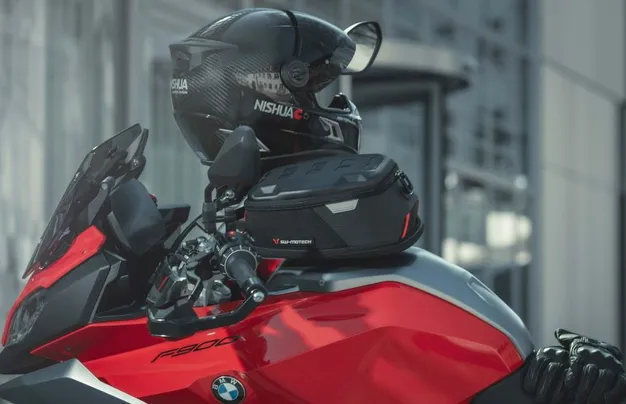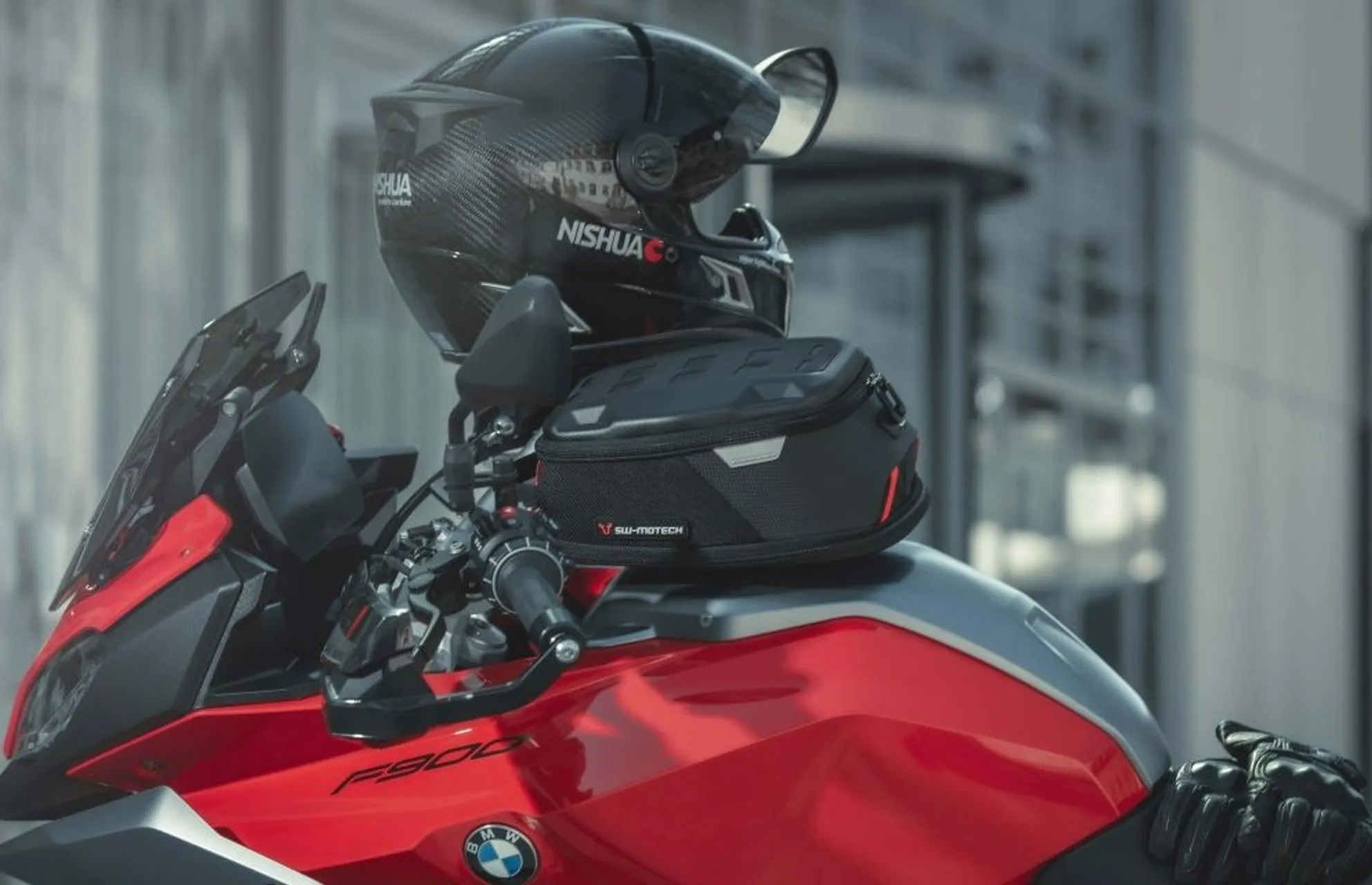When the Ducati Desert X Rally hit the market, it was quickly evident: This bike is built for tough off-road use. However, in the DACH region, the travel suitability of enduros in this size class plays a crucial role. Often, many kilometers on the highway must be covered before reaching the challenging and legal off-road tracks. Short test rides are usually not enough to make a comprehensive judgment. That's why we put the Ducati Desert X Rally to the test over four days, taking it from Switzerland to the Western Alps region. At the border between Italy and France, we tackled the Ligurian border ridge road.
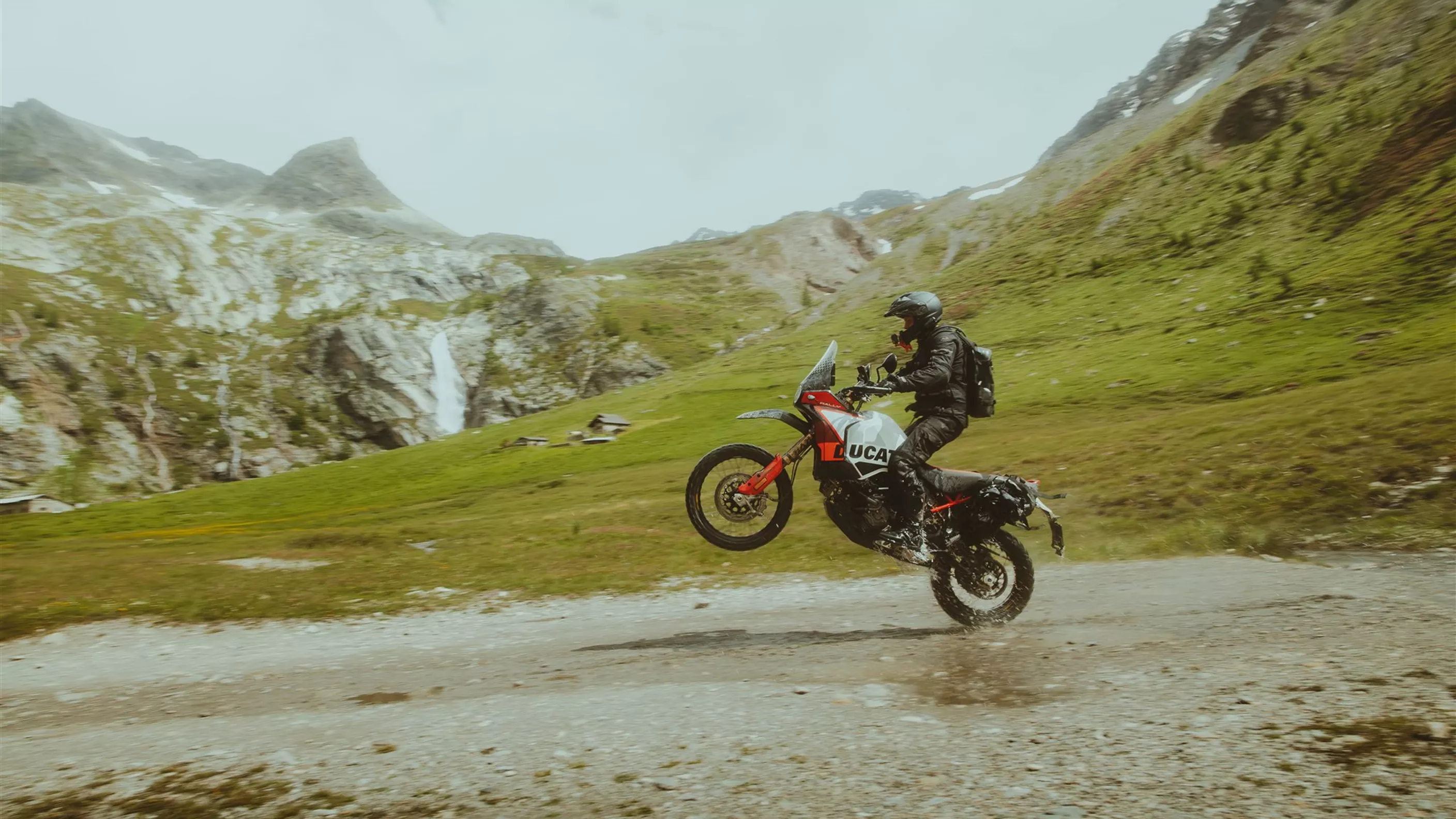
Ducati Desert X Rally in the Western Alps - Touring Capability Test
Test of the Ducati Desert X Rally in the Off-Road Paradise of the Western Alps
During an extended weekend, the Ducati Desert X Rally was tested for its touring capability in the off-road paradise of the Western Alps.
&width=72&height=72&bgcolor=rgba_39_42_44_0&mode=crop)
FunkyFrankee
published on 9/22/2024
First discipline: Long highway rides
For our project, the Ducati Desert X Rally first had to cover around 500 kilometers of highway. As an experienced adventure bike rider, I was initially concerned about the single-piece rally seat, which doesn't exactly scream comfort. But to my surprise, the roughly six-hour ride was completely unproblematic in terms of seat comfort. The seating position proved to be very pleasant for the highway, and the wind protection was acceptable. Of course, there are more efficient windshields, but I prefer the direct airflow over the unpleasant turbulence right above the helmet.
On the highway, the Ducati's high braking performance was immediately noticeable. The aggressive brakes worked excellently with the ABS, even in tricky situations. The cruise control functioned reliably, although only in 5 km/h increments, which was somewhat inflexible. Particularly welcome on this cold morning was the heated grips. However, I encountered a small issue: the fuel gauge is not very linear, so it's better to refuel a bit earlier rather than pushing the reserve.
Second Discipline: From the Road to Gravel – Electronics and Co.
Those who frequently switch between asphalt and gravel know the problem: nothing is more annoying than a complicated menu navigation and constantly resetting riding modes. Unfortunately, the Ducati Desert X Rally shares this issue with its standard version. Initially, I found the menu navigation extremely confusing, and I had trouble turning off the ABS and traction control. Only after several attempts did I understand the logic and could adjust the settings as needed.
However, it is pleasing that once the ABS is deactivated in off-road mode, it remains deactivated even after turning off the ignition. This is a big advantage for off-road use, as you don't have to struggle through the menu again after every restart. Nevertheless, a simple ABS On/Off button would be a welcome addition to make the switch between road and gravel even more straightforward.

The display of the Ducati Desert X Rally is not very intuitive at first glance - however, the ABS remains off even if the electronics are completely turned off and then turned back on.
Third Discipline: Touring Capability of the Ducati Desert X Rally
The travel suitability of the Ducati Desert X Rally is evaluated based on two criteria: luggage attachment and maintenance friendliness. For our four-day trip, we mounted Blizzard saddlebags from Enduristan. This universal solution was relatively easy to attach, but some weaknesses became apparent. The bags noticeably flapped in the empty space of the wheel arch, which was not only impractical but also annoying. A mounting plate for stabilization would definitely have been helpful here.
The design of the rear with the raised frame bar also makes it difficult to attach a luggage rack. This is a clear disadvantage for longer trips where a luggage rack plate could be used in various ways, whether for a tailpack, top case, or a larger duffel bag. If side bags are not enough, the only option is to attach additional luggage at the end of the seat. Additionally, the Öhlins steering damper prevents the attachment of a handlebar bag, like those offered by Enduristan in various sizes. Such bags would be perfect for storing power banks or tools within easy reach.
Another criterion for travel suitability is handling breakdowns. On this trip, we had the misfortune of getting a nail in the rear tire. The Desert X Rally has tubes in the tires, which is an important point. Although we had a spare tube with us, the rear wheel could not be removed with the standard Ducati tool kit, as a 36-mm twelve-point nut is used. The onboard tool kit of the Desert X Rally consists of only three Allen keys – that's it.
Fortunately, we found a workshop nearby, but this experience shows how important careful travel preparation is. Especially in remote regions, you rely on having the right tools for breakdowns at hand. The Desert X Rally requires special equipment that is not included in the onboard tool kit.
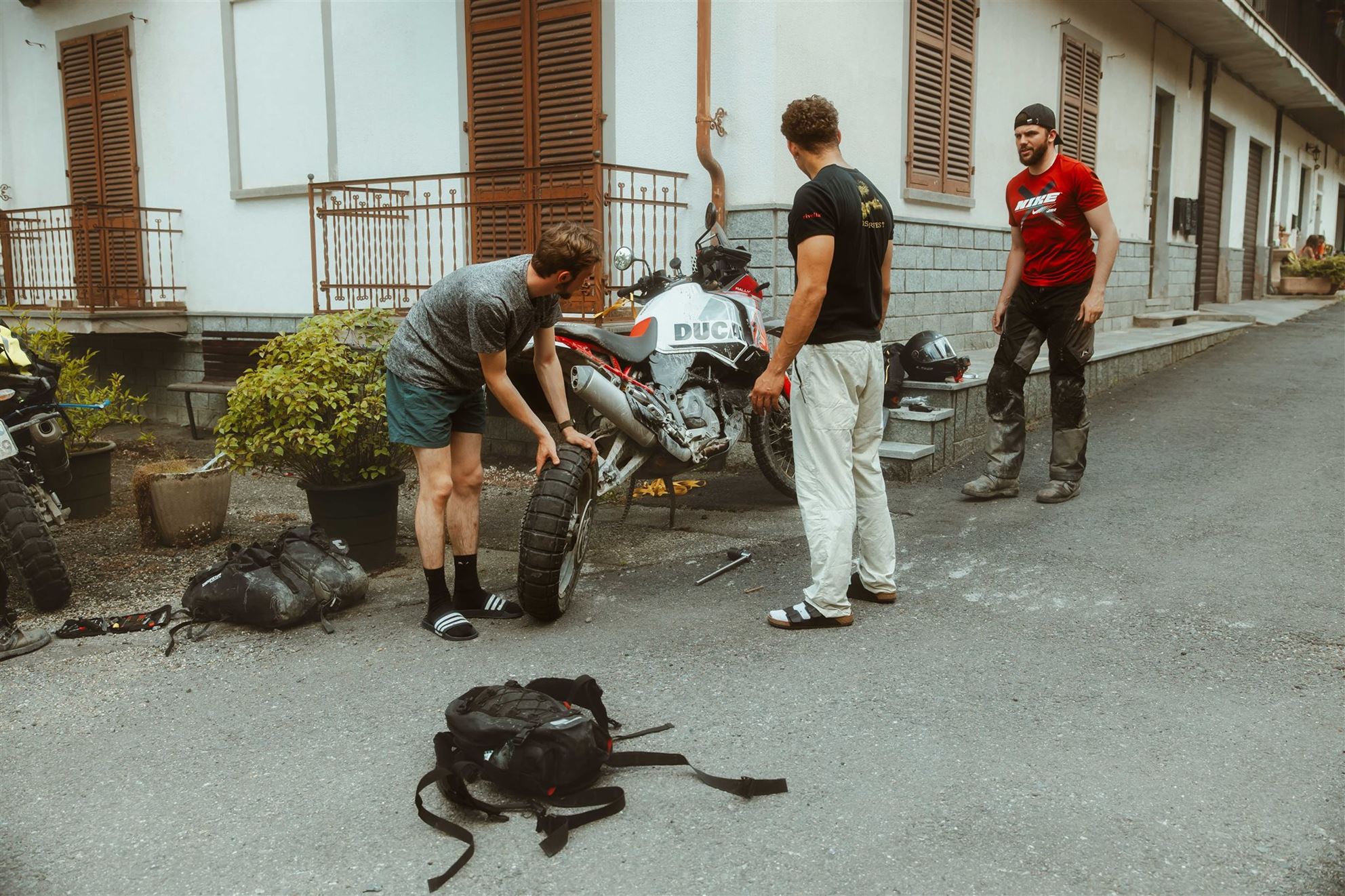
Good thing it happened during the test - the Ducati Desert X Rally got a nail in the tire. Conclusion: The onboard tools are inadequate for travel.
Fourth Discipline: Versatility Off-Road
When traveling, you constantly have to adapt to changing terrain, and that was no different in the Western Alps. We mostly rode on classic gravel roads, but there were also tougher sections with scree, steep grassy climbs, deep potholes, and even water crossings. This is where the Ducati Desert X Rally shows its true strength. Riding off-road is a real pleasure thanks to the impressive Öhlins suspension. On gravel, the bike offers unique feedback, and thanks to the adjustable throttle response, the Desert X Rally almost floats over bumps, even with luggage and an 85 kg rider.
Particularly impressive: no bottoming out of the suspension, no nervous front wheel. Even with the more road-oriented Pirelli Scorpion Rally STR, the Desert X Rally easily handles steep climbs and loose surfaces. The finely adjustable rear wheel slip control allows just enough wheelspin to get through the mud in a controlled manner but immediately cuts off when it could become dangerous on wet grass.
The versatility of the Rally mode was also interesting. You can wind out the Desert X Rally, but with the right setting, it also offers a pleasurable yet dynamic riding experience at low revs and gentle throttle response that is both fun and confidence-inspiring.
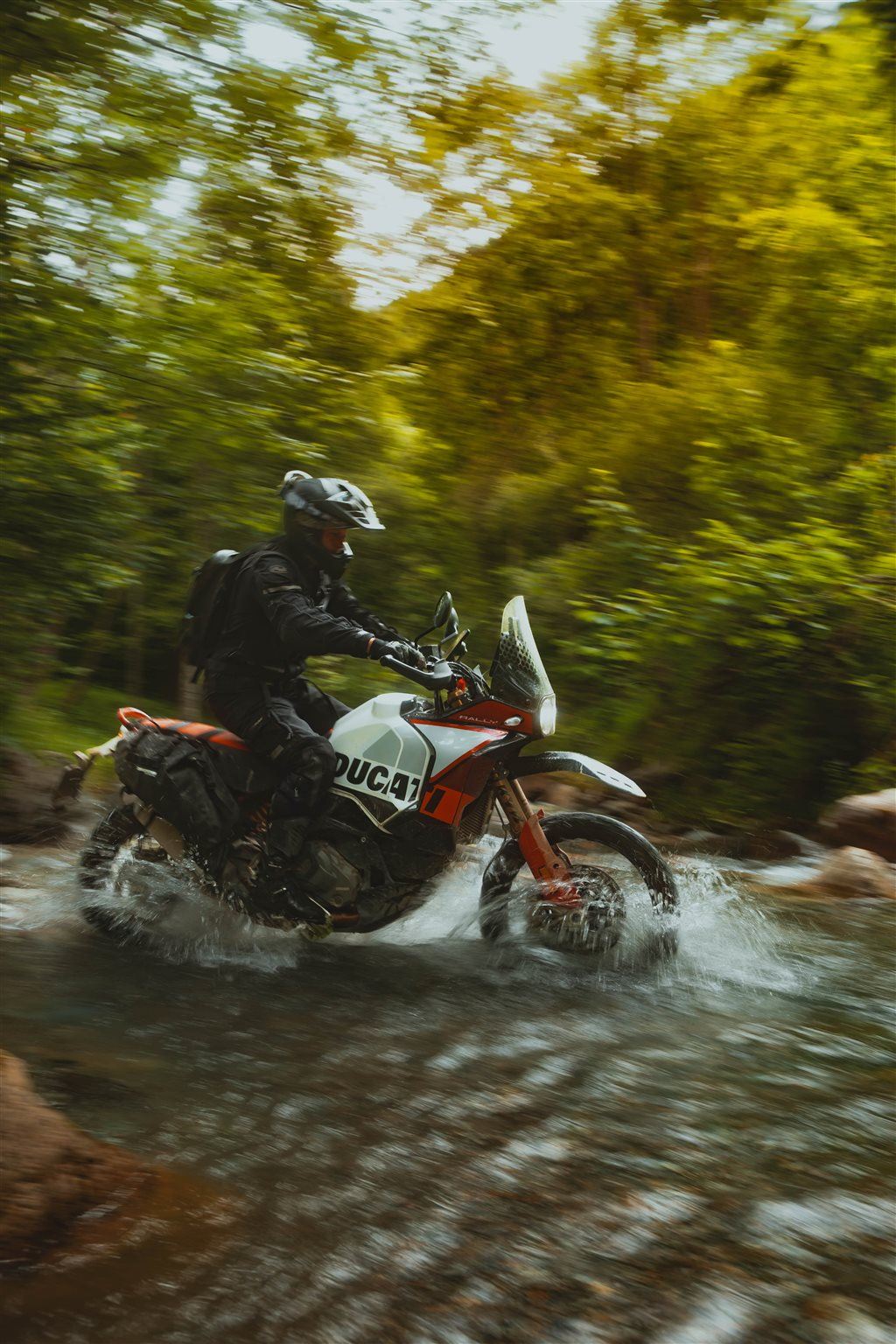
Impresses off-road with incredibly good handling - Ducati Desert X Rally
Conclusion: Adventure Touring with the Ducati Desert X Rally
When it comes to the Ducati Desert X Rally, there's no need to think twice – it's immediately clear: This motorcycle is made for tough off-road use. Surprisingly, however, the machine also impresses on the highway with comfort, efficiency, and range. This means you can confidently cover longer distances to your desired off-road destination.
Once you arrive in the terrain, the Desert X Rally leaves little to be desired. Thanks to one of the best off-road chassis currently available as standard, the bike handles even the toughest lines with ease. It gives the rider so much confidence that you quickly realize how high your own limit is with this machine.
Nevertheless, special care is needed when preparing for a trip with the Desert X Rally. The sparse onboard tools and the special tools required for a wheel change necessitate good preparation. Luggage management also requires some compromises. However, for those who like to travel light and spartan, the Desert X Rally offers sufficient luggage attachment options and should generally pose no problems.
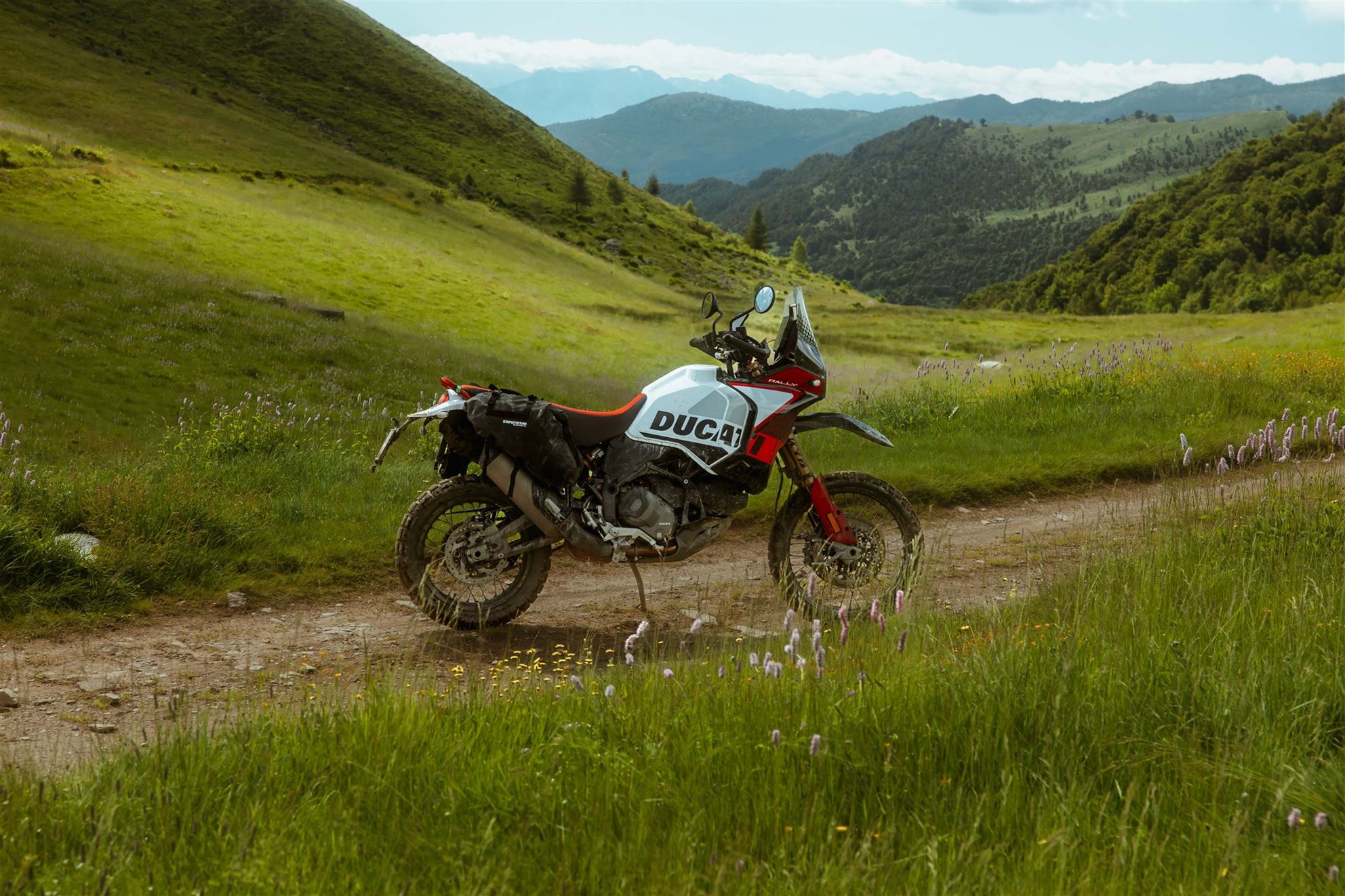
The Western Alps are a beautiful off-road destination for true adventure bike riders.
The Western Alps as a Legal Off-Road Destination - Our Four-Day Route
For all off-road enthusiasts in the German-speaking world, the Western Alps should definitely be at the top of the list. The combination of legal gravel roads, historic military paths, and breathtaking panoramas makes this region a perfect destination for adventurers on two wheels.
Our adventure began on the first day at 6 a.m. near Solothurn, Switzerland. From there, I set off for Bardonecchia, where I met my buddies around noon. Our first joint stop was Monte Jafferau, a highlight of the region, particularly known for its off-road routes. Unfortunately, the summit was still covered with snow at this time of year, so we had to return the same way. We then continued to Col de Sommeiller, one of the highest drivable passes in the Alps. However, snow also prevented us from mastering the final stage to the summit.
The reason we tackled both mountains on the first day lies in the local restrictions of the Italian authorities. Monte Jafferau can only be driven on Wednesdays and Saturdays, while Col de Sommeiller is closed to motorized vehicles between July 1 and September 30 each Thursday. These rules should definitely be observed to avoid fines.
On the second day, we continued our journey on the Trans Euro Trail (TET) Italy, which led us from Oulx over the mountain ranges towards the south. The route offered spectacular views and varied gravel tracks. However, in Perero, we had a flat tire, which we repaired on the spot before continuing our ride.
On the third day, we started from Saluzzo further south. After some asphalt sections, which always offered breathtaking views, we reached the gravel road from Canosio, a picturesque route winding through barren mountain landscapes. This stage was particularly impressive as it led off the main roads through lonely valleys, revealing the true beauty of the Western Alps.
Our last day ended in Borgo San Dalmazzo, where we stayed in a charming accommodation to set off for home the next morning, refreshed and full of energy. The four days in the Western Alps offered everything an off-road heart desires – from challenging tracks to unforgettable views to a real sense of adventure and freedom.
Ducati Desert X Rally in the Western Alps - Touring Capability Test Images
Source: 1000PS








































